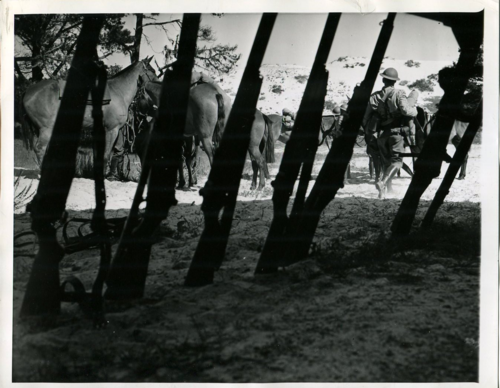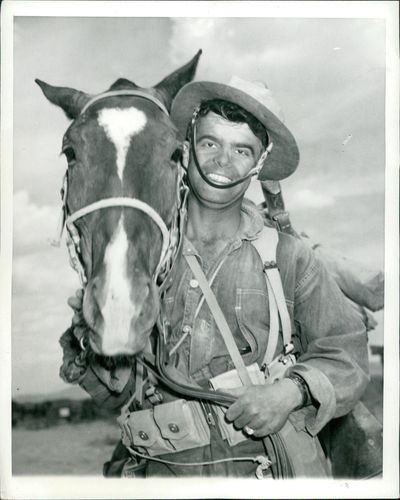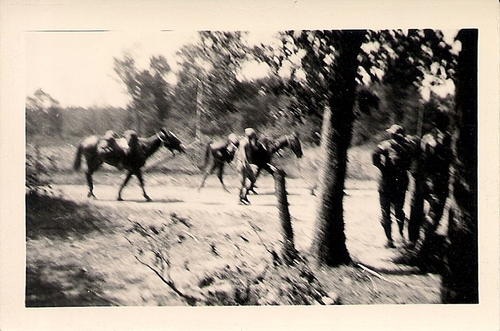.JPG)
By Rickey Robertson
There are literally thousands of stories that have come from the local folks throughout Louisiana concerning the Great Louisiana Maneuvers. Even today, when visiting with the old timers, just sitting on the porch drinking coffee with them, invariably the conversation will come up about the Louisiana Maneuvers. The rural inhabitants of this section of Louisiana could not comprehend the vast number of troops and vehicles that invaded them during the maneuvers. One thing they all remember is the magnificent cavalry horses that were used by the mounted units and the big Missouri mules used by the field artillery units. B.D. (Bud) Robertson tells a story of a beautiful cavalry horse coming up the lane to their farm late one afternoon. The horse was running lickety-split, as fast as he could go, without a rider, but with full cavalry gear on him. Sometime later a dusty cavalryman, obviously a "Yankee" (who had no knowledge of the South or its insects) came trudging up and asked if his horse had came by and was told that it had. He replied that he had tied his horse to some bushes and that all of a sudden it was covered by "little yellow flies", which made his horse run away. Little did he know that he had stopped and dismounted on a yellow jacket nest and these little insects had stung his horse and made it run off ! Later in the day he came trudging back with his mount in tow.
Mr. Robertson also tells of how late in the evening troopers from a cavalry unit camped next to his farm house and attempted to slip into the family corn patch and cut corn stalks for the cavalry mounts. They were run out but remained camped in the area. Robertson also said that one of his most prized possessions as a youngster during the maneuvers was when he found a "cavalry hat" lying in the road, that had been knocked from a soldier's head during a night attack. It was his first hat, and he was proud of it!
Another story Mr. Robertson tells concerns a "chinaberry" tree at their farm that had a full crop of chinaberries on it. Several cavalrymen spied the tree, and thinking it was a fruit tree began to gather and eat large quantities of these berries. As he and his father approached, they overheard one of the cavalrymen tell the others that those are the worst tasting grapes he had ever eaten ! When told what they had eaten and that they were supposedly poisonous, all of them began spitting, sputtering, and coughing. Some wild grape's, weren't they!
The long columns of mounted cavalry traveled day and night, often stopping only to water their mounts. Residents remember seeing the cavalry horses in column with feed bags on their muzzles, eating oats and corn as they traveled. Many rural people tell of catching soldiers in their corn cribs trying to get additional corn for their mounts.
One of the greatest feats that was actually accomplished during the Louisiana Maneuvers was made by the U.S. Cavalry. During the night of September 18 and early morning of September 19, 1941, the 1st Cavalry Division, attached to the blue Army, swam their mounts and brought over scout and reconnaissance vehicles near Pendleton Ferry on the Sabine River. As General George Patton's 2nd Armored Division, assigned to the Red Army, retreated from Many, La. north through Zwolle, La., the 1st Cavalry attacked Patton's blocking force comprised of the 2nd Cavalry Division. At Zwolle, the last cavalry versus cavalry battle fought by the United States Cavalry began. Surprised by the 1st Cavalry the Red Army units had several tanks captured at Zwolle, but of utmost importance, the cavalry troopers of the 1st Cavalry captured the depot and railhead located there. There at the railhead were great piles of much needed supplies. This cavalry battle raged all over the town of Zwolle. General Patton and his 2nd Armored were between Zwolle and Converse and had to turn around and counterattack the 1st Cavalry. Patton's tanks finally stopped the advance by the mounted cavalry troopers of the 1st Cavalry just north of Zwolle. When General Headquarters reviewed this battle, they were fascinated by the fact that the mounted cavalry troopers had forded and swam the Sabine River at midnight as they began their plan of attack on Zwolle. Just think, there were thousands of cavalry mounts and cavalry troopers who swam the river at night! And not a man, horse, or vehicle was lost in this event! This was the greatest feat according to GHQ of the whole Louisiana Maneuvers. But no matter how great the feat was, the end was in sight for the mounted cavalry units. As the maneuvers ended, many officers and non-commissioned officers were ordered to the Philippines. They arrived only weeks before the Japanese attacked the islands. These men were assigned to the 26th Cavalry, known as the Philippine Scouts. These men of the 26th Cavalry and their Filipino cavalry troopers, fought in the last cavalry charge in the history of the United States Cavalry as they stopped the Japanese tanks attacking the American-Filipino army units retreating onto Bataan. They held against the Japanese tanks but were decimated in doing so. And sadly the survivors retreated onto Bataan and one of the last food sources for the starving troops was the prized cavalry horses of the 26th Cavalry.
By the end of the Louisiana Maneuvers, the beloved cavalry mounts were being traded for mechanized vehicles. To the cavalryman, his mount was more dependable than a motor vehicle. A veteran cavalryman could saddle and place his equipment on his mount and be in formation in less than 3 ½ minutes. The mounted units of the U.S. Army had performed magnificently during the maneuvers but were being displaced by the fast mechanized units. The field artillery had big, strong Missouri mules used as pack transport; after being unloaded, the artillerymen then used the mules as mounts until they were needed again to transport cargo. There is still a large wild horse herd on Peason Ridge Military Reservation. As you view these wild horses, you can see the blood lines of the cavalry horses of World War II in them. Many of the cavalry mounts, sick or lame, along with some who escaped, mixed with the wild horses roaming the Peason area and their descendants still roam freely throughout the area.
We have just touched on a few horse tales of the cavalry that took place here in Louisiana during the maneuvers of 1941. There are many more stories to be located about the Great Louisiana Maneuvers and the horse cavalry units that were scattered throughout the maneuver area. I sure would like to hear of your stories of the maneuvers. Just stop and think, the initial combat training for all the army units in the American Army took place right here in Louisiana. The units of all types were prepared somewhat for the upcoming war. And Louisiana had one of the greatest parts in the preparations for World War II with the Louisiana Maneuvers of 1941.
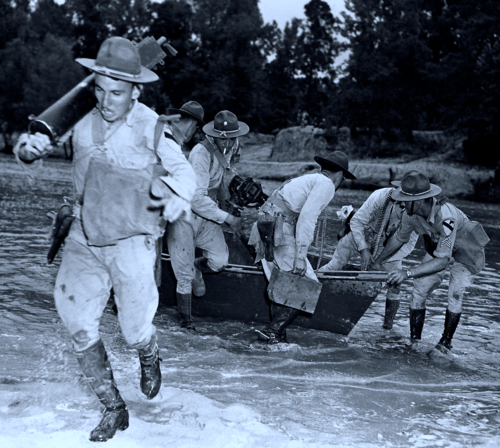
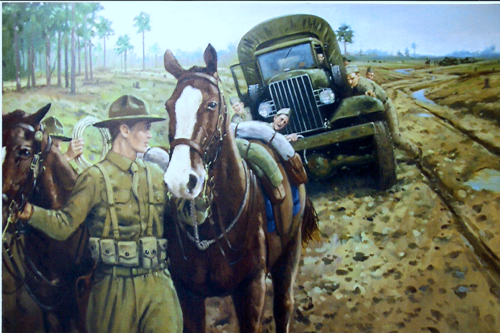
_rdax_500x406.jpg)
_rdax_500x393.jpg)
